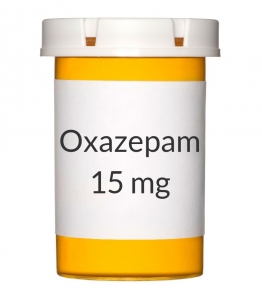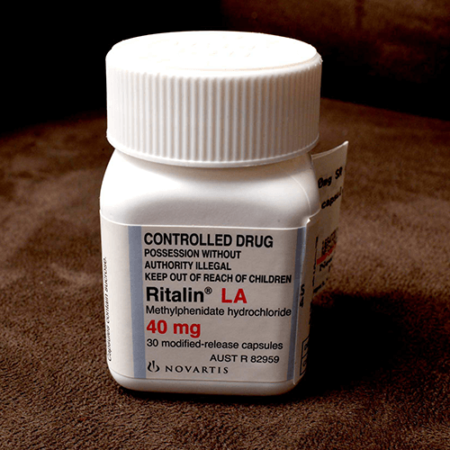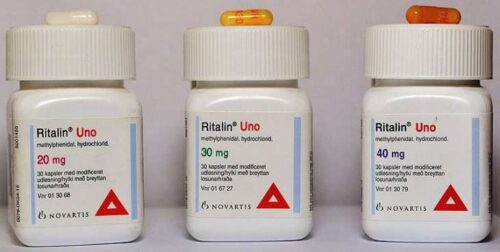Buy Midazolam online /1. Name of the medicinal product Midazolam 5 mg/ml Solution for Injection or Infusion
| Indication |
Adults < 60 y |
Adults ≥ 60y / debilitated or chronically ill |
Children |
| Conscious sedation |
i.v.
Initial dose: 2 – 2.5 mg
Titration doses: 1 mg
Total dose: 3.5–7.5 mg |
i.v.
Initial dose: 0.5–1 mg
Titration doses: 0.5–1 mg
Total dose: <3.5 mg |
i.v. in patients 6 months–5 years
Initial dose: 0.05–0.1 mg/kg
Total dose: < 6 mg
i.v. in patients aged 6–12 years
Initial dose: 0.025–0.05 mg/kg
Total dose: <10 mg
rectal > 6 months
0.3–0.5 mg/kg
i.m. 1–15 years
0.05–0.15 mg/kg |
| Anaesthesia premedication |
i.v.
1-2 mg repeated
i.m.
0.07–0.1 mg/kg |
i.v.
Initial dose: 0.5mg
Slow uptitration as needed
i.m.
0.025–0.05 mg/kg |
rectal > 6 months
0.3–0.5 mg/kg
i.m. 1–15 years
0.08–0.2 mg/kg |
| Anaesthesia induction |
i.v.
0.15–0.2 mg/kg
(0.3–0.35 without premedication) |
i.v.
0.05-0.15 mg/kg
(0.15–0.3 without premedication) |
|
| Sedative component in combined anaesthesia |
i.v.
Intermittent doses of 0.03–0.1 mg/kg or continuous infusion of 0.03–0.1 mg/kg/h |
i.v.
lower doses than recommended for adults <60 years |
|
| Sedation in ICU |
i.v.
Loading dose: 0.03–0.3 mg/kg in increments of 1–2.5 mg
Maintenance dose: 0.03–0.2 mg/kg/h |
i.v. in pre-term new-born infants <32 weeks gestational age
0.03 mg/kg/h
i.v. in new-born infants >32 weeks and children up to 6 months
0.06 mg/kg/h
i.v. in patients > 6 months of age
Loading dose: 0.05–0.2 mg/kg
Maintenance dosage: 0.06–0.12 mg/kg/h |
CONSCIOUS SEDATION DOSAGE
For conscious sedation prior to diagnostic or surgical intervention, midazolam is administered i.v. The dose must be individualised and titrated, and should not be administered by rapid or single bolus injection. The onset of sedation may vary individually depending on the physical status of the patient and the detailed circumstances of dosing (e.g. speed of administration, amount of dose). If necessary, subsequent doses may be administered according to the individual need. The onset of action is about 2 minutes after the injection. Maximum effect is obtained in about 5 to 10 minutes.
Adults
The intravenous injection of midazolam should be given slowly, at a rate of approx. 1 mg/30 seconds.
Adults below the age of 60
In adults below the age of 60 the initial dose is 2 to 2.5 mg given 5 to 10 minutes before the beginning of the procedure. Further doses of 1 mg may be given as necessary. Mean total doses have been found to range from 3.5 to 7.5 mg. A total dose greater than 5 mg is usually not necessary.
Adults over 60 years of age
In adults over 60 years of age, debilitated or chronically ill patients, the initial dose must be reduced to 0.5-1.0 mg and given 5-10 minutes before the beginning of the procedure. Further doses of 0.5 to 1 mg may be given as necessary. Since in these patients the peak effect may be reached less rapidly, additional midazolam should be titrated very slowly and carefully. A total dose greater than 3.5 mg is usually not necessary.
Children
I.V. administration: midazolam should be titrated slowly to the desired clinical effect. The initial dose of midazolam should be administered over 2 to 3 minutes. One must wait an additional 2 to 5 minutes to fully evaluate the sedative effect before initiating a procedure or repeating a dose. If further sedation is necessary, continue to titrate with small increments until the appropriate level of sedation is achieved. Infants and young children less than 5 years of age may require substantially higher doses (mg/kg) than older children and adolescents.
• Paediatric patients less than 6 months of age: paediatric patients less than 6 month of age are particularly vulnerable to airway obstruction and hypoventilation. For this reason, the use in conscious sedation in children less than 6 months of age is not recommended.
• Paediatric patients 6 months to 5 years of age: initial dose 0.05 to 0.1 mg/kg. A total dose up to 0.6 mg/kg may be necessary to reach the desired endpoint, but the total dose should not exceed 6 mg. Prolonged sedation and risk of hypoventilation may be associated with the higher doses.
• Paediatric patients 6 to 12 years of age: initial dose 0.025 to 0.05 mg/kg. A total dose of up to 0.4 mg/kg to a maximum of 10 mg may be necessary. Prolonged sedation and risk of hypoventilation may be associated with the higher doses.
• Paediatric patients 12 to 16 years of age: should be dosed as adults.
Rectal administration: the total dose of midazolam usually ranges from 0.3 to 0.5 mg/kg. Rectal administration of the ampoule solution is performed by means of a plastic applicator fixed on the end of the syringe. If the volume to be administered is too small, water may be added up to a total volume of 10 ml. Total dose should be administered at once and repeated rectal administration avoided.
The use in children less than 6 months of age is not recommended, as available data in this population are limited.
Deep i.m. administration: the doses used range between 0.05 and 0.15 mg/kg. A total dose greater than 10.0 mg is usually not necessary. This route should only be used in exceptional cases. Rectal administration should be preferred as i.m. injection is painful.
In children less than 15 kg of body weight, midazolam solutions with concentrations higher than 1mg/ml are not recommended. Higher concentrations should be diluted to 1mg/ml.
ANAESTHESIA DOSAGE
Premedication
Premedication with midazolam given shortly before a procedure produces sedation (induction of sleepiness or drowsiness and relief of apprehension) and preoperative impairment of memory.
Midazolam can also be administered in combination with anticholinergics. For this indication midazolam should be administered i.v. or i.m., deep into a large muscle mass 20 to 60 minutes before induction of anaesthesia), or preferably via the rectal route in children (see below). Close and continuous monitoring of the patients after administration of premedication is mandatory as interindividual sensitivity varies and symptoms of overdose may occur.
Adults
For preoperative sedation and to impair memory of preoperative events, the recommended dose for adults of ASA Physical Status I & II and below 60 years is 1-2 mg i.v. repeated as needed, or 0.07 to 0.1 mg/kg administered deep i.m. The dose must be reduced and individualised when midazolam is administered to adults over 60 years of age, debilitated, or chronically ill patients. The recommended initial i.v. dose is 0.5 mg and should be slowly up titrated as needed. A dose of 0.025 to 0.05 mg/kg administered deep i.m. is recommended. In case of concomitant administration of narcotics the midazolam dose should be reduced. The usual dose is 2 to 3 mg.
Paediatric Patients
New born infants and children up to 6 months of age:
The use in children less than 6 months of age is not recommended as available data are limited.
Children over 6 months of age
Rectal administration: The total dose of midazolam, usually ranging from 0.3 to 0.5 mg/kg should be administered 15 to 30 minutes before induction of anaesthesia. Rectal administration of the ampoule solution is performed by means of a plastic applicator fixed on the end of the syringe. If the volume to be administered is too small, water may be added up to a total volume of 10 ml.
Deep i.m. administration: As deep i.m. injection is painful, this route should only be used in exceptional cases. Rectal administration should be preferred. However, a dose range from 0.08 to 0.2 mg/kg of midazolam administered deep i.m. has been shown to be effective and safe. In children between ages 1 and 15 years, proportionally higher doses are required than in adults in relation to body-weight.
In children less than 15kg of body weight, midazolam solutions with concentrations higher than 1mg/ml are not recommended. Higher concentrations should be diluted to 1mg/ml.
INDUCTION
Adults
If midazolam is used for induction of anaesthesia before other anaesthetic agents have been administered, the individual response is variable. The dose should be titrated to the desired effect according to the patient’s age and clinical status. When midazolam is used before or in combination with other i.v. or inhalation agents for induction of anaesthesia, the initial dose of each agent should be significantly reduced, at times to as low as 25% of the usual initial dose of the individual agents.
The desired level of anaesthesia is reached by stepwise titration. The i.v. induction dose of midazolam should be given slowly in increments. Each increment of not more than 5 mg should be injected over 20 to 30 seconds allowing 2 minutes between successive increments.
• Premedicated adults below the age of 60 years
In premedicated adults below the age of 60 years, an intravenous dose of 0.15–0.2 mg/kg will generally suffices.
• Non-premedicated adults below the age of 60
In non-premedicated adults below the age of 60 the dose may be higher (0.3 to 0.35 mg/kg i.v.). If needed to complete induction, increments of approximately 25% higher of the patient’s initial dose may be used. Induction may instead be completed with inhalational anaesthetics. In resistant cases, a total dose of up to 0.6 mg/kg may be used for induction, but such larger doses may prolong recovery.
• Premedicated adults over 60 years of age, debilitated or chronically ill patients
The dose should significantly be reduced, e.g., down to 0.05- 0.15 mg/kg administered i.v. over 20- 30 seconds and allowing 2 minutes for effect.
• Non-premedicated adults over 60 years of age
Non-premedicated adults over 60 years of age usually require more midazolam for induction; an initial dose of 0.15 to 0.3 mg/kg is recommended. Non-premedicated patients with severe systemic disease or other debilitation usually require less midazolam for induction. An initial dose of 0.15 to 0.25 mg/kg will usually suffice.










